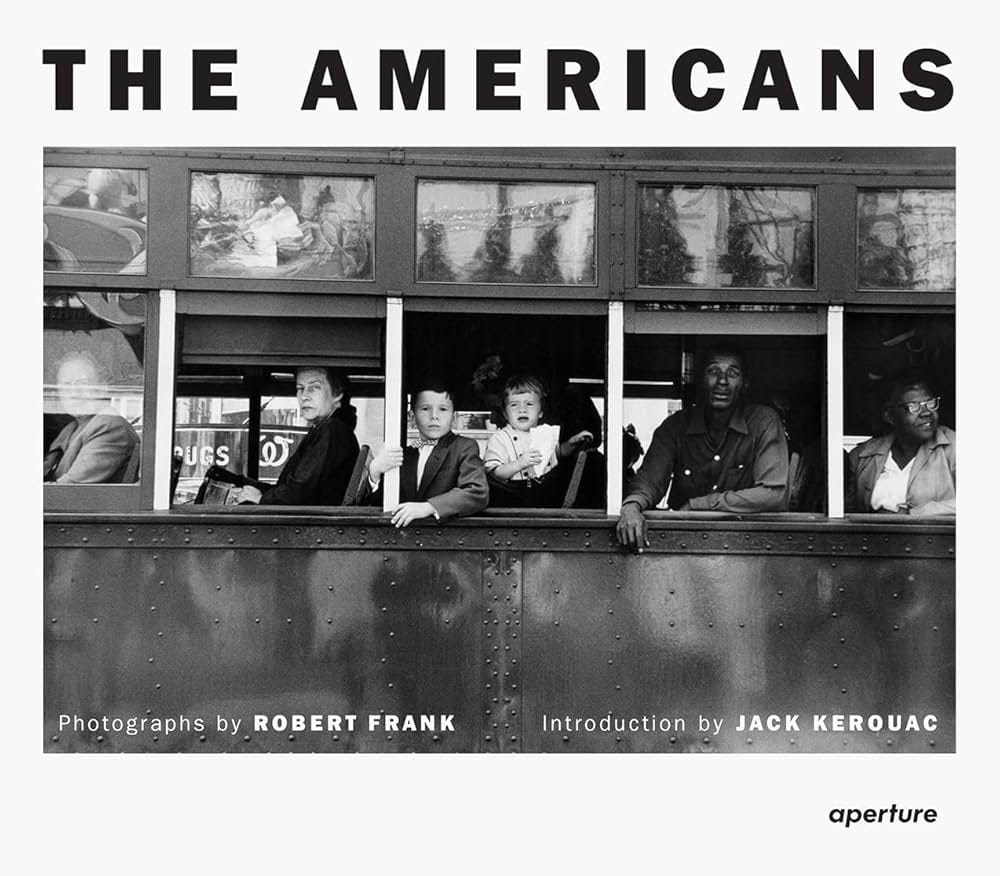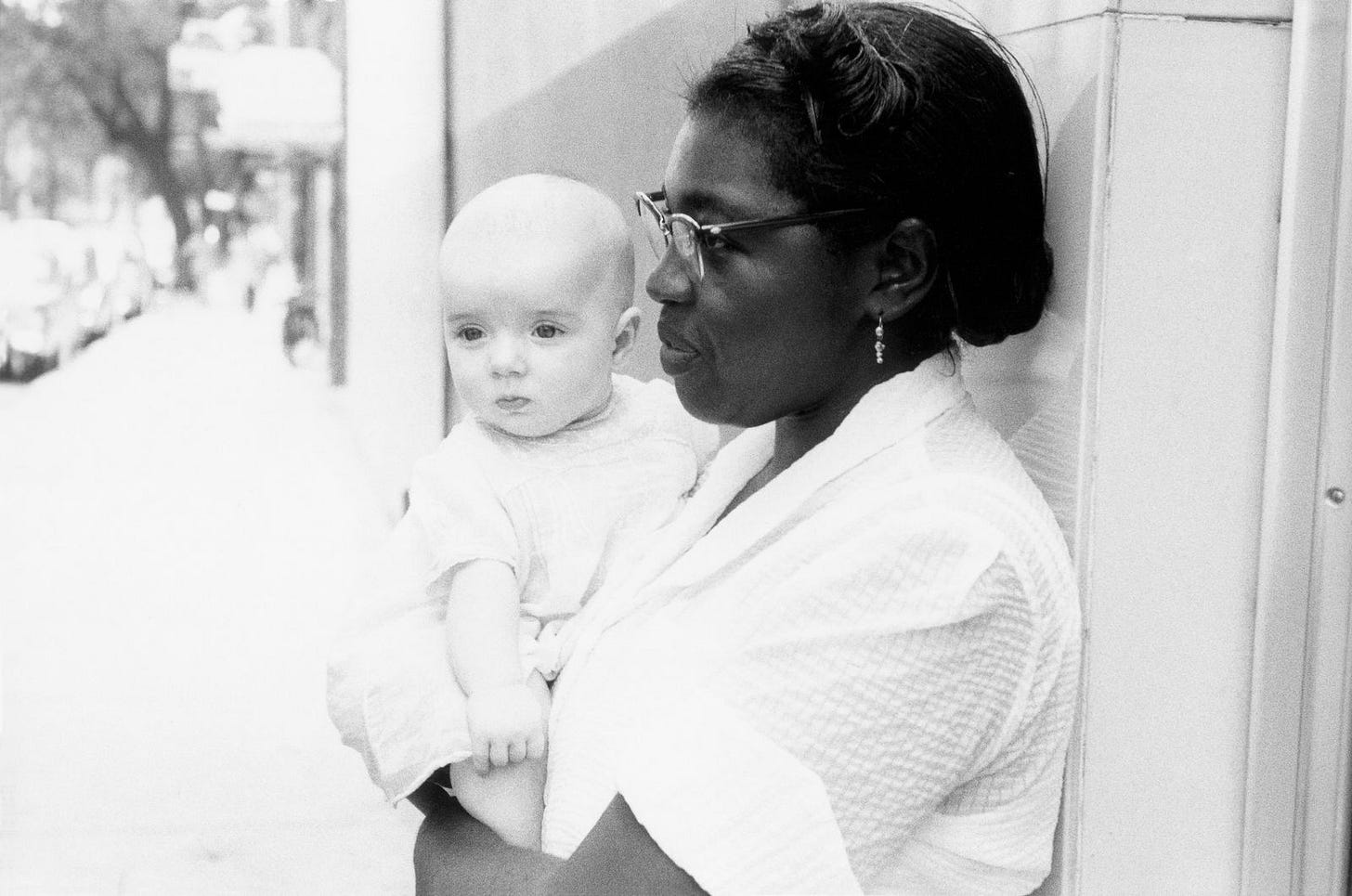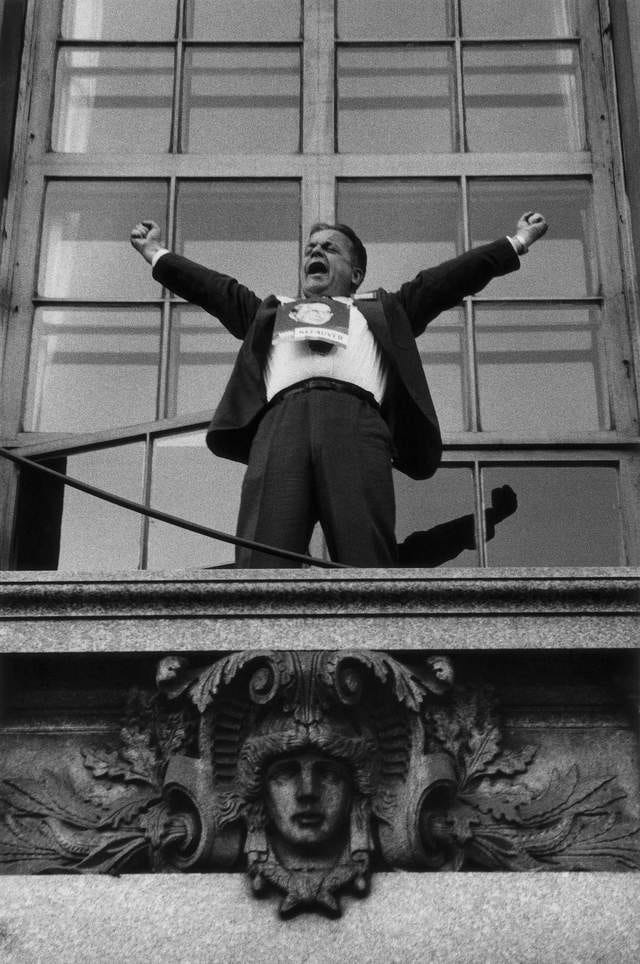The Americans
Robert Frank in the 1950s, and where we are today
Given the rancor today as to what the United States is and what it needs to become, I thought it relevant to look back at Robert Frank’s landmark book from a different era, The Americans. Frank received a Guggenheim Fellowship in 1955 to travel and photograph across the United States. Over two years he took a series of road trips, some with his family, and made 28,000 photographs but chose only 83 for publication. The Americans was published soon after, first in France and then the US.
The Americans was roundly criticized in the United States when it was first published, only later becoming recognized as a classic, perhaps still the most incisive look at the nation’s character. The following comments from 1960 about the work of the Swiss photographer were made by staffers working at Popular Photography magazine. They remain remarkably pertinent, not altogether different from some of the views being expressed by commentators on today’s society.
An Off-Beat View of The U.S.A.: Popular Photography’s editors comment on a controversial new book
“Seldom has a book of photographs aroused as much controversy in the Popular Photography office as Robert Frank’s The Americans (Grove Press, Inc., New York, cloth bound, $7.50). The reactions of the editors ranged from admiration to contempt. Some of these opinions are reported here in the form of individual reviews.”
The following are excerpts from their critiques:
John Durniak:
“Everyone has the right to discover America including Robert Frank, photographer.
“The results of his expeditions into the intestines of America (the United States to be exact) are now available in a volume called The Americans. Over-all, Frank has created many beautiful pictures. Over-all, he has created, also, a wart-covered picture of America. If this is America (the United States) then we should burn it down completely and start all over again. According to Mr. Frank’s observations 200 years of goofing have taken place….
“The publishers have left a word out of the title. It should read: Some Americans. That is exactly what Frank has done, photographed some Americans. But has he photographed what these people really are like? His pictures are unconvincing.
“Frank is a great photographer of single pictures but a poor essayist and no convincing story-teller at all. The knowing of America takes a heap of knowing, and the shooting of it, a great deal of effort. Frank possibly has done 5 percent of the job, if that.”
Arthur Goldsmith:
“I wish Robert Frank and/or Grove Press had chosen some less-inflammatory title for this book than The Americans, because that choice is going to make many people so damn mad they’ll never see the pictures, which for all their faults—I’ll enumerate them in a moment—are worth seeing. The book is not about Americans but about a wild, sad, disturbed, adolescent, and largely mythical world, the World of the Beat Generation. As such I found many of the images lovely and evocative: the hunched man striding to God knows what cosmic destiny beneath a neon arrow in Los Angeles; the elongated cowboy so unexpectedly rolling a cigarette on a New York street, the gloom and glare of a New Mexico bar.
“Frank has managed to express, through the recalcitrant medium of photography, an intense personal vision, and that’s nothing to carp at. But as to the nature of that vision, I found its purity too often marred by spite, bitterness, and narrow prejudices just as so many of the prints are flawed by meaningless blur, grain, muddy exposure. drunken horizons, and general sloppiness.”
Les Barry:
“It’s doubtful that he really thinks all Americans are simple beer-drinking, jukebox-playing, pompous, selfish, intolerant, money-worshipping. flag-waving, sacrilegious, insensitive folks. Therefore, it is only logical to conclude that his book is an attack on the United States. As such, it must be considered an overwhelming success, with the vitriolic tone of his photographs increased by the careful selection of his seemingly objective tongue-in-cheek captions.”
Bruce Downes:
“They are images of an America seen by a joyless man who hates the country of his adoption.”
H. M. Kinzer:
“In The Americans, one of our finest photographers has produced a slashing and bitter attack on some U. S. institutions, while completely ignoring others. However much one may quarrel with this one-sidedness (which is most assuredly intentional, and not the result of any ignorance of the ‘better’ aspects of our culture), it is impossible to deny the sharp perception and the sheer power of most of the images in the book. It is useless to argue that Robert Frank should have devoted a part of his book to the vast and smiling American middle class, another to the champagne-and-Jaguar stratum, and so on. The fact is simply that he feels strongly about some of the things he sees in his adopted country, and wants to call them to our attention. He does it superbly. As for the title’s seeming to imply all Americans, it is quite clearly intended as tongue-in-cheek, but the intention was perhaps too subtle.”
The response I wrote to this photograph two years ago, following a request by Jason Eskenazi for his project on the book:
“It’s about a time when pennies meant something, when fluorescent lighting looked strange, and “absolutely no fillers” in your food was still possible. A waitress could be tired and underpaid but still central to the establishment, rendered more complex and more real than the garish Santa Claus looming above. People counted, especially those in the working class. They endured. They had to.”
The spread from Popular Photography :
My favorite comment from those above by the Popular Photography staffers is the last one, by Kinzer, which seems the most well-balanced and, like Frank’s book, incisive.
It would be important to have such a contested discussion about the photographic work being done today to characterize the United States. Which images reveal the deeper strata that lie beneath the polarizing rhetoric?
Please consider becoming a subscriber, even a paid one! It would be deeply appreciated.








Is Robert Frank's The Americans "still the most incisive look at the nation’s character"? Was it ever? David Campany wrote something similar in his recent anthology. “After all," Campany wrote about The Americans, "Frank had given his photography and the country his fullest attention … his achievement could not be surpassed.” Notwithstanding whatever aesthetic innovations were developed in Frank's book, It's sad that contemporary photography criticism and history continue to credit the White European, rather than Gordon Parks or Berenice Abbott, whose long careers demonstrated their commitment to trenchant visual commentary, and whose photographs still "reveal the deeper strata" of life in the United States.
It is perhaps noteworthy that Robert Frank settled in Nova Scotia. Fascinating to read the comments. Given that no US publisher could be found and Delpire in Paris made the book first, it is, as are many books, observers from the outside who paint the picture. Thank you. Great post!